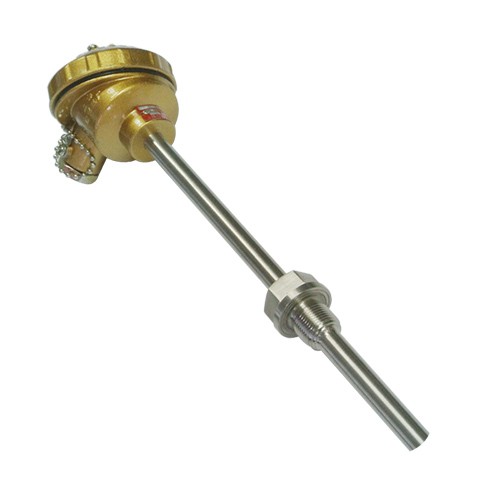Description
WRR-430 WRR-431 WRR-432 WRR-433 WRR-440 type B thermocouples
Product introduction:
WRR-430 WRR-431 WRR-432 WRR-433 WRR-440 type B thermocouples, the load power of the resistor. The resistor is an energy conversion element. It converts electrical energy into thermal energy during operation. During this conversion process, its own temperature rises and the surrounding temperature also increases. This process causes the reversible change in the performance of the resistor. And irreversible change. The so-called reversible change means that the resistance value also changes when the temperature changes, and the resistance value returns to the original value when the temperature recovers. This physical change process is described by the temperature coefficient. The irreversible change means that the resistance value also changes when the temperature changes, and the resistance value cannot return to the original value after the temperature is restored. This physical process is described by "aging". The temperature coefficient and aging of the resistor reflect the stability and reliability of the resistor to a certain extent. Therefore, the electrical load performance of the resistor depends on the allowable heating temperature during long-term operation.
Uneven heating of resistor:
The above discussion is based on the assumption that each part of the resistor generates heat uniformly. In fact, the heating temperature of each part is uneven. It is related to the quality of the base body, the protective layer, the lead wire structure, and the groove quality of the resistor. The influence of these factors is very complicated, and the calculation of local overheating is also very difficult. The following is a discussion of various uneven heating phenomena of resistors:
Non-uniform heating in the axial direction: The heat conduction and heat dissipation of the small power resistor plays the main role, but the heat conduction through the lead wire is a shortcut, which causes the temperature of the two ends of the lead wire to be lower than the temperature of the middle of the resistor body. If the contact resistance between the cap and the resistive film is too large, a physical phenomenon such as excessive power consumption and high current density at the cap may occur, eventually causing this part to overheat.
Non-uniform heating in the radial direction: The heat generated by the resistor is first transmitted in the radial direction and is radiated to the surrounding environment through the coating layer. The thin-film resistor has a small temperature difference between the inside and the outside due to the thin thickness of the resistance film and the coating layer. The temperature difference between the inside and outside of the resistor can be large.
Non-uniform heating of grooved resistors: In grooved resistors, the heat is mainly concentrated in the resistance film after the groove. Therefore, the length of the grooved part, the uniformity of the spiral strip, the ratio of the conductive strip to the groove, and the groove The depth of the elements is a factor of uneven heating.
Non-uniform heating of resistor structure:
Various types of resistors inevitably produce structural inconsistencies due to process factors or other factors during the manufacturing process, such as: uneven film thickness (uneven surface state of the substrate, uneven rotation during coating, and substrate failure during coating) Many factors, such as insufficient vacuum, can cause uneven film layer) will cause uneven distribution of resistance value, resulting in uneven load distribution and local overheating. Defects in the resistive film (holes, scratches, and dirt on the surface of the substrate) will cause uneven local resistance value distribution, cause uneven load distribution, and form local overheating. During the manufacturing process, if the film is impacted, defects will also be formed, eventually causing local overheating.






